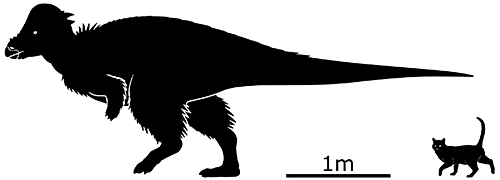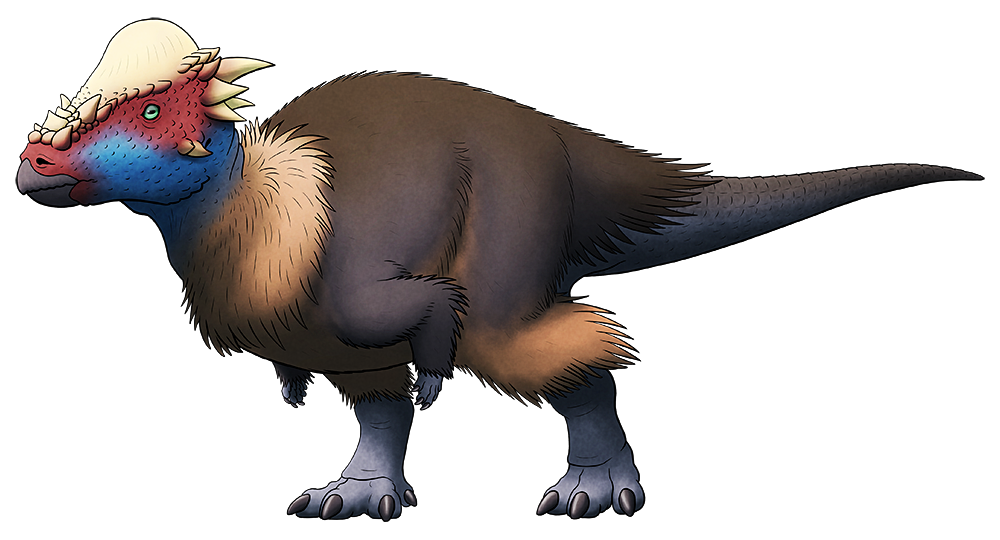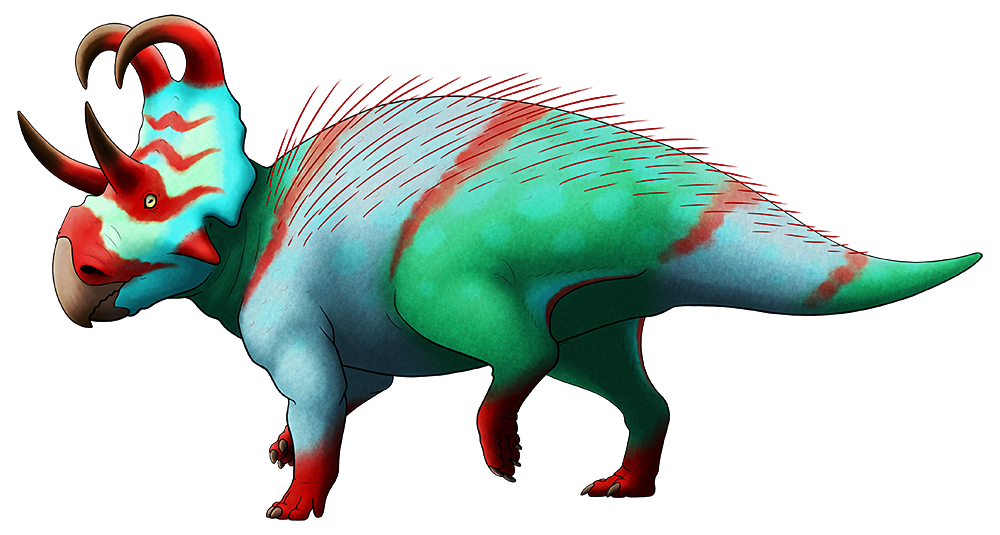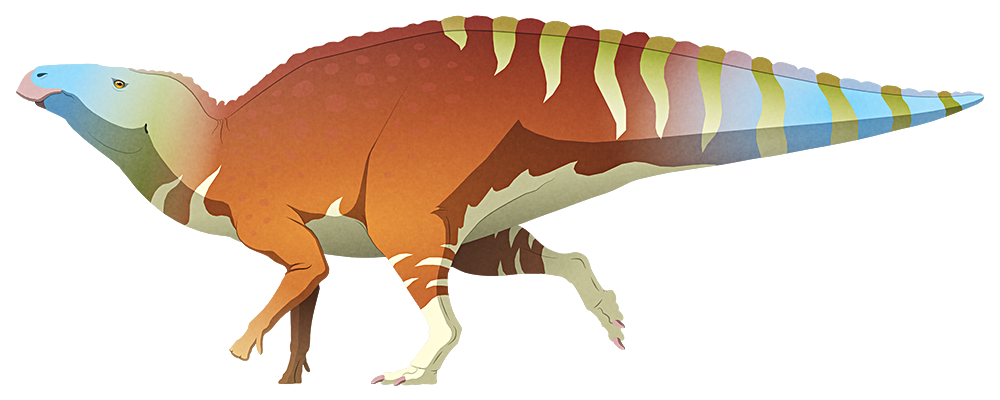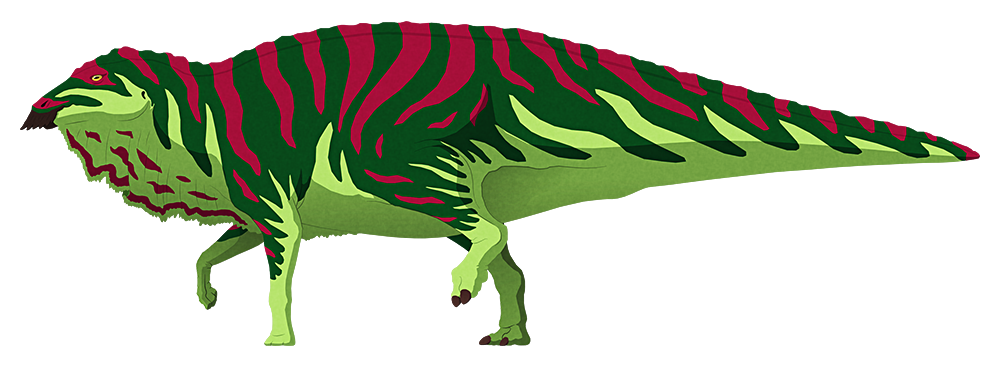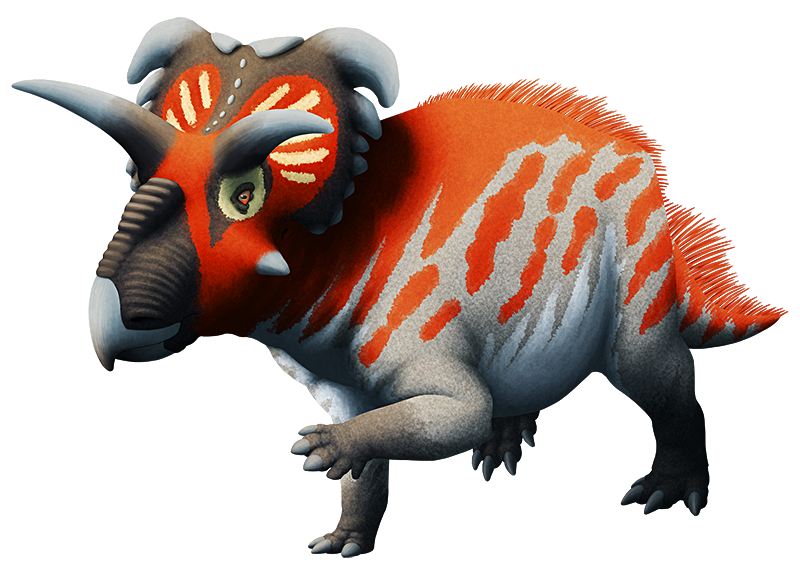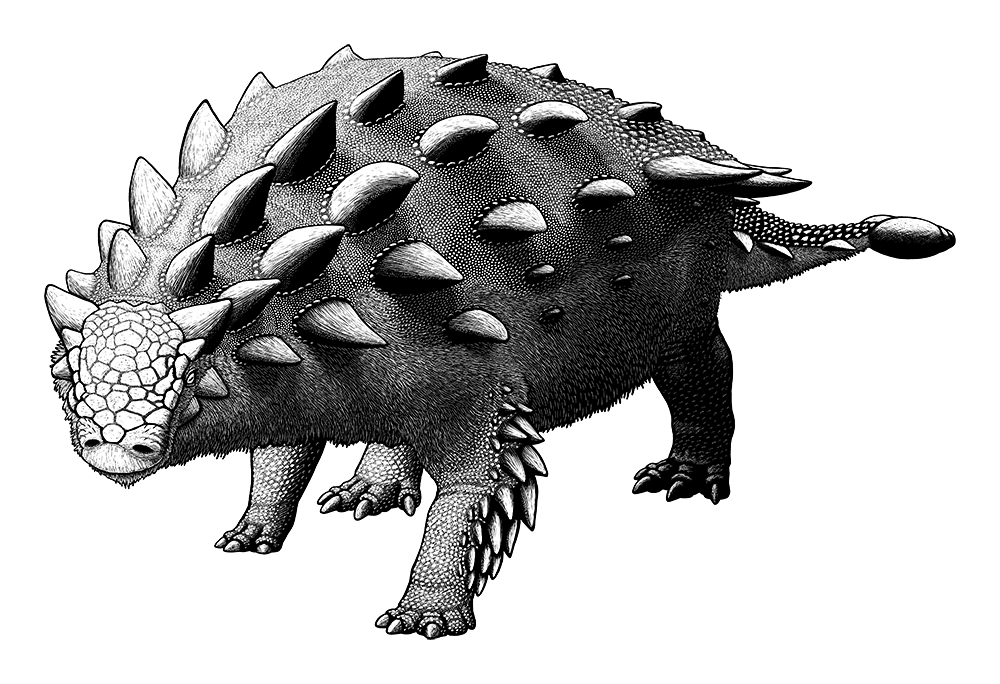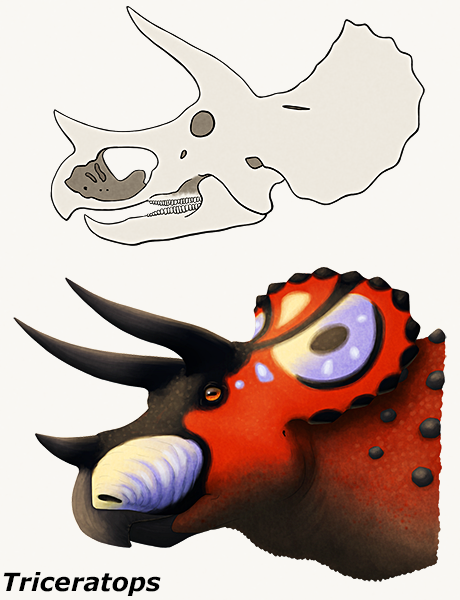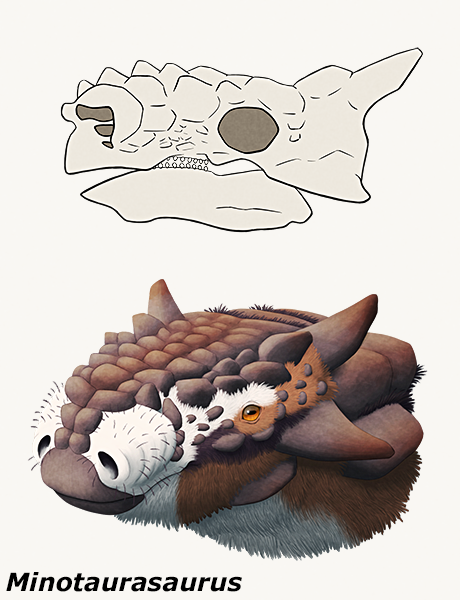Pachycephalosaurs are highly recognizable dinosaurs with their thick spiky skulls, and it’s not hugely surprising that they were the evolutionary cousins of the equally weird-headed ceratopsians.
Much like their frilled relatives they had beaks at the tips of their snouts and large gut cavities for digesting plant matter, but they also had surprisingly sharp theropod-like teeth in front of their more standard herbivore teeth further back – suggesting they may also have been opportunistic omnivores, occasionally snacking on carrion or small animals similarly to modern pigs or bears.
Their striking-looking dome heads were probably used for combat, headbutting or flank-butting each other, and many fossil skulls show evidence of injuries that would have been caused by that sort of behavior.
The eponymous Pachycephalosaurus wyomingensis lived in North America right at the end of the Cretaceous, about 70-66 million years ago. It was one of the largest of its kind, reaching lengths of around 4.5m (14’9″), and was characterized by a large bony dome-head surrounded by small blunt spikes.
But it turns out that was probably only what it looked like as a fully mature adult.
Recent discoveries of juvenile Pachycephalosaurus skulls confirmed a hypothesis proposed a few years earlier: these dinosaurs changed appearance drastically as they grew up, and younger individuals had been mistaken for separate species. They started off with domeless flat heads, bristling with long spikes (a form previously named Dracorex hogwartsia) then as they matured their domes began to grow (previously Stygimoloch spinifer) and by full maturity they had big domes with the spikes shrunk down to smaller stubbier knobs (the classic Pachycephalosaurus look).
This particular reconstruction depicts a Stygimoloch-like subadult individual, not quite fully mature and still sporting some longer spikes.
